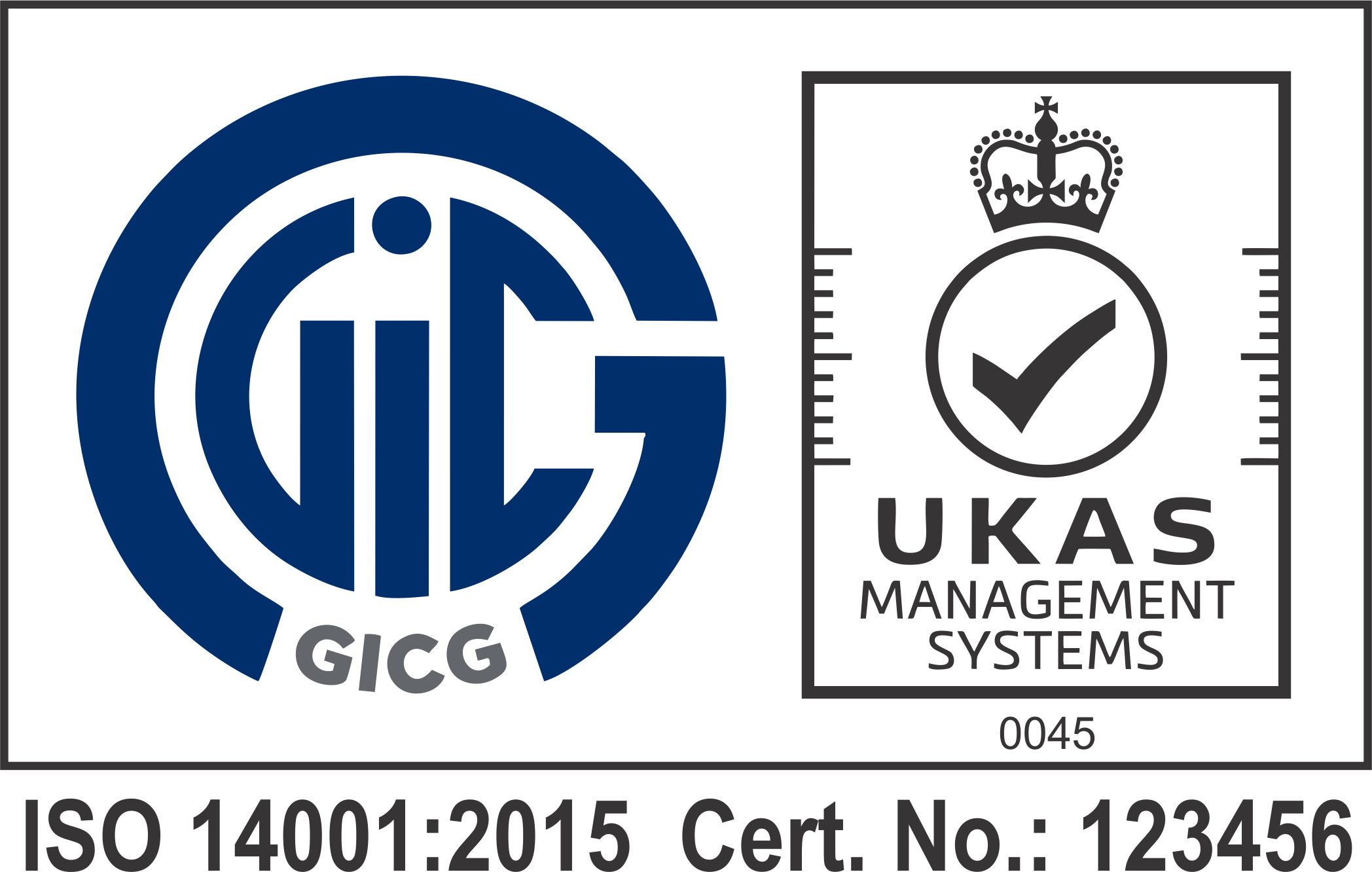ISO 14001:2015 Environmental Management System Certification
 ISO 14001 is an international standard series on Environmental Management Systems (EMS), issued by the International Organization for Standardization (ISO). This standard provides guidance for organizations in implementing activities that minimize negative impacts on the environment and public health. These activities include establishing an environmental management system, conducting life cycle assessments, eco-labeling, and greenhouse gas inventory.
ISO 14001 is an international standard series on Environmental Management Systems (EMS), issued by the International Organization for Standardization (ISO). This standard provides guidance for organizations in implementing activities that minimize negative impacts on the environment and public health. These activities include establishing an environmental management system, conducting life cycle assessments, eco-labeling, and greenhouse gas inventory.
First issued in 1996, ISO 14001 has undergone several revisions to align with increasingly stringent environmental management requirements, with the current version being ISO 14001:2015. To date, ISO 14001 has been adopted in nearly 200 countries and territories, with approximately 300,000 certified organizations (Source: ISO Survey of Management System Standard Certifications – 2023). These statistics demonstrate the widespread adoption and effectiveness of ISO 14001 in corporate environmental management.
ISO 14001:2015 outlines specific requirements for establishing, implementing, maintaining, and improving an Environmental Management System (EMS) within organizations. The standard not only helps organizations effectively control and manage environmental aspects during operations but also encourages the identification and pursuit of continuous improvement opportunities, minimizing adverse impacts, and enhancing management effectiveness. ISO 14001:2015 provides a flexible framework applicable to all types of organizations, from SMEs to multinational corporations.
The standard’s requirements help organizations identify environmental objectives relevant to their operational context and set specific measures to achieve them, such as efficient resource management, emissions reduction, waste management, and implementing activities that protect the environment. Moreover, ISO 14001:2015 emphasizes the leadership's role in committing to compliance with legal requirements and environmental obligations, ensuring that the environmental management system is integrated into the overall business strategy. This not only aids organizations in complying with environmental laws but also builds a sustainable and responsible image with the community and customers.
Benefits of Applying and Certifying ISO 14001:2015:
- Ensuring Compliance with Environmental Regulations: ISO 14001 enables organizations to easily meet and comply with environmental protection regulations at local, national, and international levels. This helps organizations avoid fines due to regulatory violations and increases competitiveness in international markets, where environmental law compliance requirements are becoming more stringent.
- Cost Savings and Enhanced Financial Efficiency: Implementing ISO 14001 enables organizations to optimize resource and energy use, minimize waste in the production process, thus saving operational costs and improving financial performance.
- Improving the Organization’s Image and Reputation: ISO 14001 certification demonstrates an organization’s commitment to environmental protection, enhancing its image and reputation in the eyes of customers, partners, and stakeholders. This creates a competitive advantage, especially as more consumers prefer environmentally friendly products and services.
- Proactively Managing Environmental Risks: ISO 14001 encourages organizations to proactively identify, assess, and manage environmental risks that may arise during operations. This helps prevent environmental incidents and avoid fines and costs related to pollution management.
- Building an Environmental Protection and Sustainable Development Culture: Implementing ISO 14001 raises employee awareness about the importance of environmental protection, encouraging responsible actions in daily work. This contributes to building a sustainable corporate culture while guiding the organization toward long-term sustainable development goals.
II. CERTIFICATION PROCESS
.png) 1. Certification registration: To obtain ISO 14001:2015 certification, organizations need to contact GIC Vietnam for registration guidance. Organizations then complete the application and submit it to GIC Vietnam with the required certification documents.
1. Certification registration: To obtain ISO 14001:2015 certification, organizations need to contact GIC Vietnam for registration guidance. Organizations then complete the application and submit it to GIC Vietnam with the required certification documents.
2. Audit program and auditor assignment: GIC Vietnam develops an assessment program, clearly defining the activities needed to confirm that the organization’s environmental management system (EMS) meets certification requirements. Auditors are selected based on expertise relevant to the assessment field, with additional technical auditors added as necessary.
3. Assessment process: Conducted in two stages:
Stage 1: Review documentation, conditions, scope, and the organization's readiness for stage 2 assessment.
Stage 2: Evaluate the implementation and effectiveness of the management system, including the following steps: Opening Meeting → Department/Unit Evaluation → Assessment Report Preparation → Closing Meeting.
4. Assessment report and corrective actions: The organization must implement corrective actions for errors and deficiencies found during the assessment, ensuring all requirements are fully met.
5. Review and certification issuance: The Certification Council reviews the assessment records to decide on certification approval or denial. ISO 14001:2015 certification is issued once the organization fully meets the requirements and is valid for three years, with periodic monitoring required to maintain validity.
III. GIC CERTIFICATION BENEFITS
+) International recognition: GIC is a globally recognized certification body, endorsed by prestigious organizations such as CPSC (USA), UKAS (UK), JAS-ANZ (Australia - New Zealand), SAAS (SAI), VICAS (Vietnam), SAC (Singapore), CNAS (China), and others. GIC certification offers national and international credibility, recognized by the International Accreditation Forum (IAF) and Asia-Pacific Accreditation Cooperation (APAC), helping businesses expand markets and increase global reputation.
+) High-quality certification service with competitive cost: GIC Vietnam provides certification services to strict European and North American standards, ensuring that the business’s products and services meet international requirements. Alongside excellent service quality, GIC offers competitive, reasonable costs, helping businesses optimize expenses while achieving international recognition, facilitating participation in major markets and sustainable development.
For ISO 14001:2015 certification inquiries, please contact:
GIC VIETNAM
12F, 14 Lang Ha Building, Ba Dinh District, Hanoi
Tel: 024.6275 2268, Fax: 024.6275 2269, Email: tuandm@gicvn.vn
Ho Chi Minh City Office: R502, 160 Nam Ky Khoi Nghia, Tel: 028.39307936




